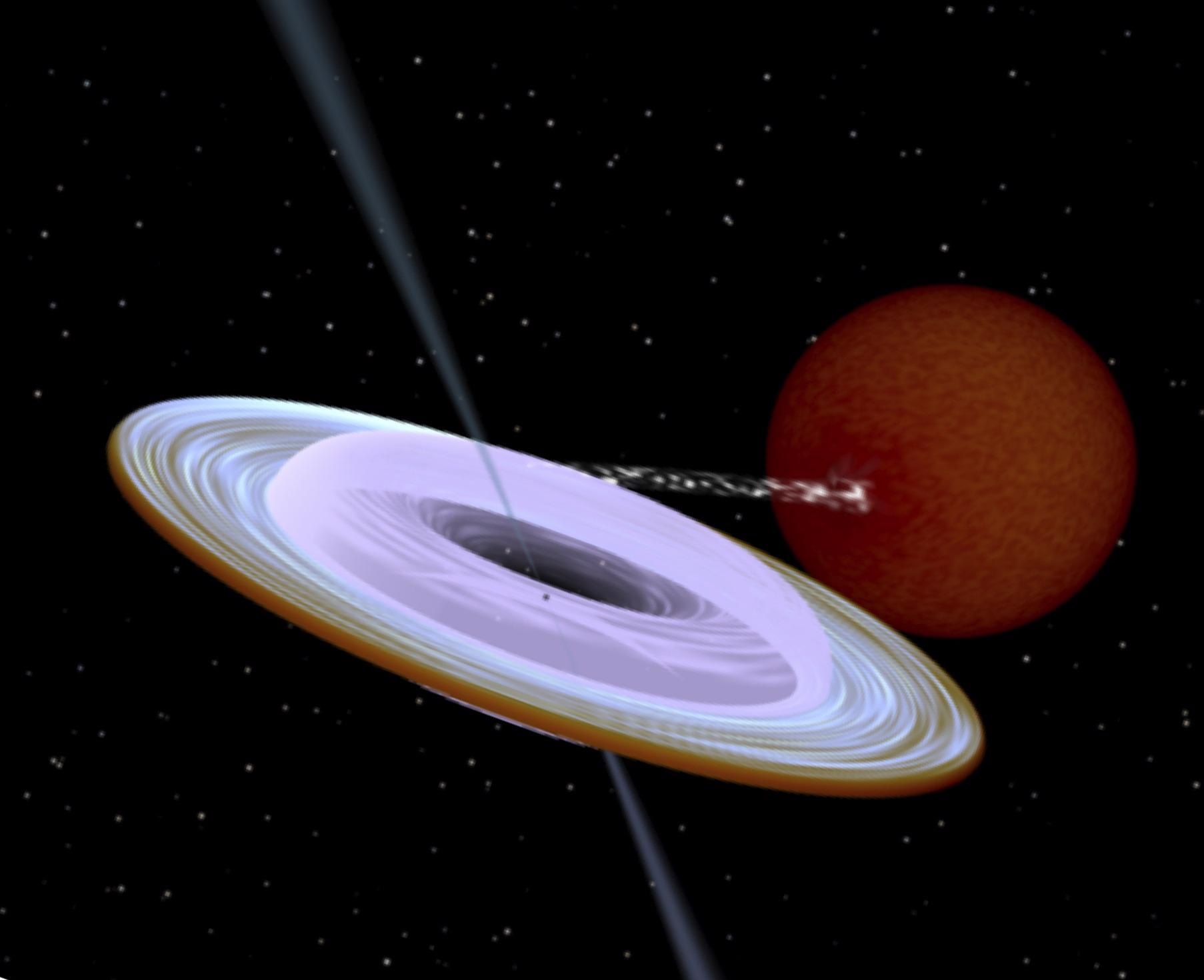Scientists from the University of Turku discovered that the axis of rotation of a black hole in a binary system slants beyond 40 degrees relative to the axis of the stellar orbit. This finding defies existing theoretical models of black hole formation.

Artist impression of the X-ray binary system MAXI J1820+070 containing a black hole (small black dot at the center of the gaseous disk) and a companion star. A narrow jet is directed along the black hole spin axis, which is strongly misaligned from the rotation axis of the orbit. Image produced with Binsim Image Credit: R. Hynes
The discovery by the scientists from Tuorla Observatory in Finland is the first consistent measurement that reveals a large variance between the axis of rotation of a black hole and the axis of a binary system orbit. The variance between the axes measured by the scientists in a binary star system termed MAXI J1820+070 was over 40 degrees.
Frequently, for the space systems having smaller objects orbiting around the central enormous body, the own rotation axis of this body is to a great degree lined up with the rotation axis of its satellites.
This holds true for the solar system as well: the planets orbit around the Sun in a plane, which approximately aligns with the equatorial plane of the Sun. The inclination of the Sun's rotation axis regarding the orbital axis of the Earth is just seven degrees.
The probability of alignment, to a great degree, does not hold for strange objects such as black hole X-ray binaries. The black holes in these systems were developed because of a cosmic cataclysm—the death of a massive star.
Currently, the black hole can be seen dragging matter from the neighboring, lighter companion star orbiting around it. Bright optical and X-ray radiation can be seen as the last sign of the infalling material, and also radio emission from the relativistic jets ejected from the system, says Juri Poutanen, Professor of Astronomy at the University of Turku and the lead author of the study.
By observing these jets, the scientists could establish the direction of the axis of rotation of the black hole very precisely. As the quantity of gas falling from the companion star to the black hole later started to decline, the system darkened, and much of the light in the system was due to the companion star.
In this manner, the scientists could compute the orbit inclination using spectroscopic methods, and it happened to almost concur with the inclination of the ejections.
To establish the 3D orientation of the orbit, one needs to also be aware of the position angle of the system on the sky, meaning how the system is turned concerning the direction to the North on the sky. This was measured using polarimetric methods, explains Juri Poutanen.
The results reported in the journal Science create stimulating prospects toward investigations of black hole development and evolution of such systems, as such extreme misalignment is tough to get in many black hole development and binary evolution settings.
The difference of beyond 40 degrees between the orbital axis and the black hole spin was totally unforeseen. Researchers have time and again assumed this difference to be extremely small when they have explored the behavior of matter in a curved time space surrounding a black hole.
The existing models are already very complex, and now, the new observations enforce the addition of a new dimension to them, Poutanen expresses.
The main finding was possible using the in-house designed polarimetric instrument DIPol-UF positioned at the Nordic Optical Telescope, which is possessed by the University of Turku together with the Aarhus University in Denmark.
Journal Reference:
Poutanen, J., et al. (2022) Black hole spin–orbit misalignment in the x-ray binary MAXI J1820+070. Science. doi.org/10.1126/science.abl4679